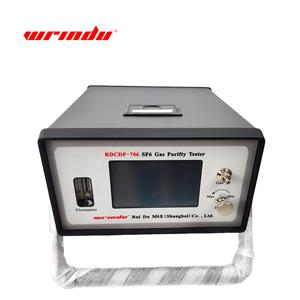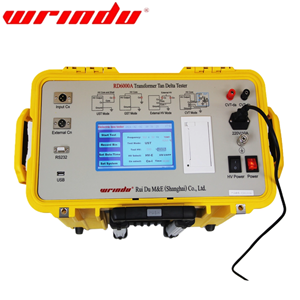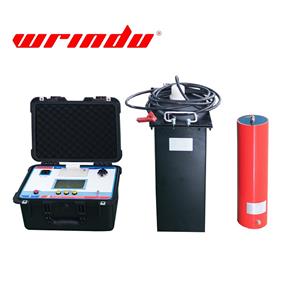Knowledge about Power Cable
Knowledge about Power Cable
Power cables can be divided into three categories: rubber insulated cables, paper insulated cables, and oil-filled cables. Cable failures can pose serious risks, primarily fire and electrical hazards. For example, aging, damaged, or overloaded cables can cause sparks or overheating, which can lead to fires. Therefore, it is very necessary to pay attention to cable health.
Test items for cable lines
Test items for power cable lines should include the following.
1. Main insulation and outer sheath insulation resistance measurement.
2. Main insulation DC withstand voltage test and leakage current measurement.
3. Main insulation AC withstand voltage test.
4. Outer sheath DC withstand voltage test.
5. Phase inspection at both ends of the cable line.
6. Insulation oil test for oil-filled cables.
7. Cross-connection system test.
8. Partial discharge measurement of power cable lines.
Test regulation for cable lines
The insulation resistance of the main insulation of each phase of the cable should be measured and the withstand voltage test should be carried out. For three-core cables with turnkey insulation, each phase should be tested separately, and the other two phase conductors, metal shields or metal sheaths and armor layers should be grounded together; for three-core cables with phase separation shielding and single-core cables, one or more phases can be tested simultaneously, and the non-tested phase conductors, metal shields or metal sheaths and armor layers should be grounded together.
When performing a withstand voltage test on the main insulation of a single-core cable with one end of the metal shield or metal sheath grounded and the other end equipped with a sheath overvoltage protector, the sheath overvoltage protector should be short-circuited to temporarily ground the metal shield or metal sheath of the cable at this end.
For cable lines with a rated voltage of 0.6/1kV, a 2500V megohmmeter should be used to measure the insulation resistance of the conductor to ground instead of the withstand voltage test. The test time should be 1 minute.
The outer sheath of AC single-core cable should be subjected to DC withstand voltage test.
Insulation resistance measurement
Insulation resistance measurement shall comply with the following provisions:
There should be no obvious change in insulation resistance measurement before and after the withstand voltage test.
The insulation resistance of the outer sheath and inner lining of the rubber-plastic cable should not be less than 0.5MΩ/km.
The rated voltage rating of the megohmmeter used to measure insulation resistance should comply with the following regulations:
1) A 2500V megohmmeter should be used for cable insulation measurements. For cables 6/6kV and above, a 5000V megohmmeter may also be used.
2) A 500V megohmmeter should be used for measuring the outer sheath and inner lining of rubber-plastic cables.
DC withstand voltage and leakage current sulation resistance measurement
DC withstand voltage test
The DC withstand voltage test voltage Ut of paper insulated cable can be calculated according to the following formula.
For turnkey insulation (with insulation):
Ut = 5*1/2(U0+U)
For phase-splitting shield insulation:
Ut= 5*U0
【U0 refers to rated voltage between cable conductor and ground or metal shield】
【U refers to cable rated line voltage】
| Cable rated voltage U0/U | 1.8/3 | 3/3 | 3.6/6 | 6/6 | 6/10 | 8.7/10 | 21/35 | 26/35 |
| DC test voltage | 12 | 14 | 24 | 30 | 40 | 47 | 105 | 130 |
【Paper insulated cable DC withstand voltage test voltage (kV)】
The DC withstand voltage test voltage of rubber-plastic insulated cables with voltage levels of 18/30kV and below should be calculated according to the formula Ut= 4*U0
| Cable rated voltage U0/U | 48/66 | 64/110 | 127/220 | 190/330 | 290/500 |
| DC test voltage | 162 | 275 | 510 | 650 | 840 |
【DC withstand voltage test voltage of oil-filled insulated cable (kV)】
Site conditions permit the use of only the AC withstand voltage method. When the rated voltage U0/U is 190/330 kV or less, the effective value of the AC voltage to be used is 42% of the DC test voltage listed above. When the rated voltage U0/U is 290/500 kV, the effective value of the AC voltage to be used is 50% of the DC test voltage listed above.
During the test, the test voltage can be increased evenly in 4 to 6 stages. Each stage should be held for 1 minute, and the leakage current value should be read. After the test voltage reaches the specified value, it should be maintained for 15 minutes. During this time, the leakage current should be read at 1 minute and 15 minutes. The influence of stray current should be eliminated during the measurement.
The unbalance coefficient (ratio of maximum value to minimum value) of the leakage current of each phase of paper insulated cable should not be greater than 2; when the leakage current of 6/10kV and above cables is less than 20μA and the leakage current of 6kV and below cables is less than 10μA, the unbalance coefficient may not be specified.
If the cable leakage current exhibits any of the following characteristics, the cable insulation may be defective and the defect should be identified and corrected.
1) The leakage current is highly unstable;
2) The leakage current increases sharply with increasing test voltage;
3) The leakage current increases with increasing test time.
AC withstand voltage test
Rubber-plastic cables should preferably be subjected to 20 Hz to 300 Hz AC withstand voltage test. The test voltage and time should comply with the requirements in the following table.
| Rated voltage U0/U | Test voltage | Time(min) |
| 18/30kV and below | 2U0 | 15 (or 60) |
| 21/35kV~64/110kV | 2U0 | 60 |
| 127/220kV | 1.7U0 (1.4U0) | 60 |
| 190/330kV | 1.7U0 (1.3U0) | 60 |
| 290/500kV | 1.7U0 (1.1U0) | 60 |
When the above test conditions are not met or there are special regulations, the method of applying normal system voltage to ground for 24 hours can be used instead of AC withstand voltage test.
Welcome Contact Us for technical help.
If you are interested in Cable and Line Testing Instrument, click here to find more information.




